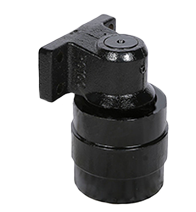What is forging and casting?
Casting is the process in which metal is heated in a furnace until molten. While in the liquid state, the metal is poured in a die, or mold, to create a component shape. Forging is the process in which thermal and mechanical energy is applied to ingots to cause the alloy to change shape while in a solid state.
What is the difference between forging and casting steel?
Casting is the process where metal is heated until molten. While in the molten or liquid state it is poured into a mold or vessel to create a desired shape. Forging is the application of thermal and mechanical energy to steel billets or ingots to cause the material to change shape while in a solid state.
What is better forging and casting?
Forged parts had a 26% higher tensile strength than the same cast parts. Forged parts had a 37% higher fatigue strength resulting in a much longer lifespan than cast parts.
Why use casting?We use castings for a wide range of wearparts and components that are too large, complicated, intricate or otherwise unsuitable for the forging process. We can forge parts up to 50kgs but the sheer energy required to forge larger items make casting a much more viable alternative.
We currently cast mining and earthmoving components to 580 kg. We can cast up to 3000 kg if required. Manganese work hardening screens are one of our specialities. We have found that by carefully choosing alloys and applying proven methods of heat treatment, we can produce castings of high quality, strength and wearability. The casting process better lends itself to making parts where internal cavities are required.
The advantages of casting include:
For general GET as well as large and complex components – casting is a fantastic method of manufacture.
Why use forging?Forging offers uniformity of composition and structure. Forging results in metallurgical recrystalisation and grain refinement as a result of the thermal cycle and deformation process. This strengthens the resulting steel product particularly in terms of impact and shear strength.
Forged steel is generally stronger and more reliable than castings and plate steel due to the fact that the grain flows of the steel are altered, conforming to the shape of the part.
The advantages of forging include:
Tags :

Sign up to our newsletter for the construction machinery